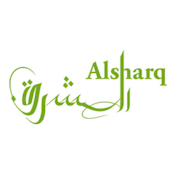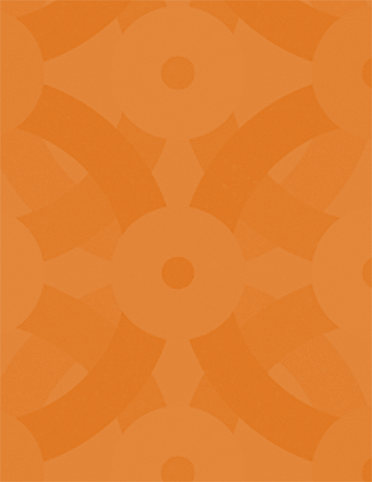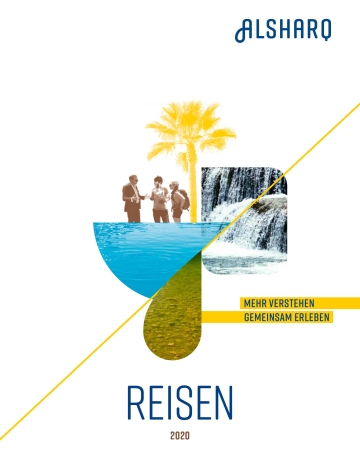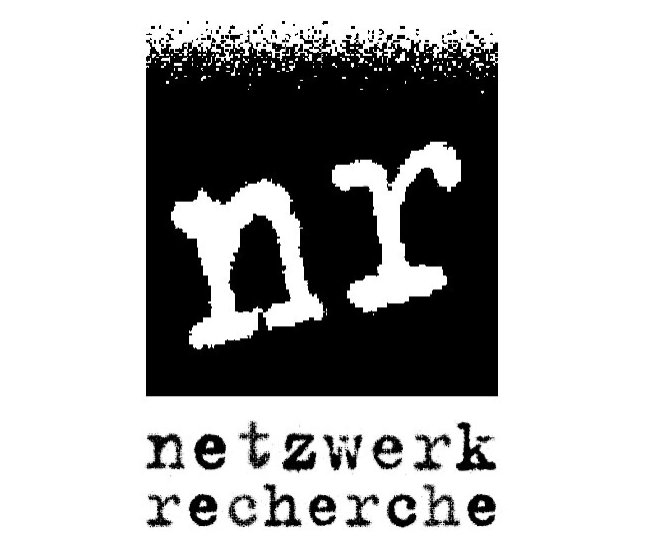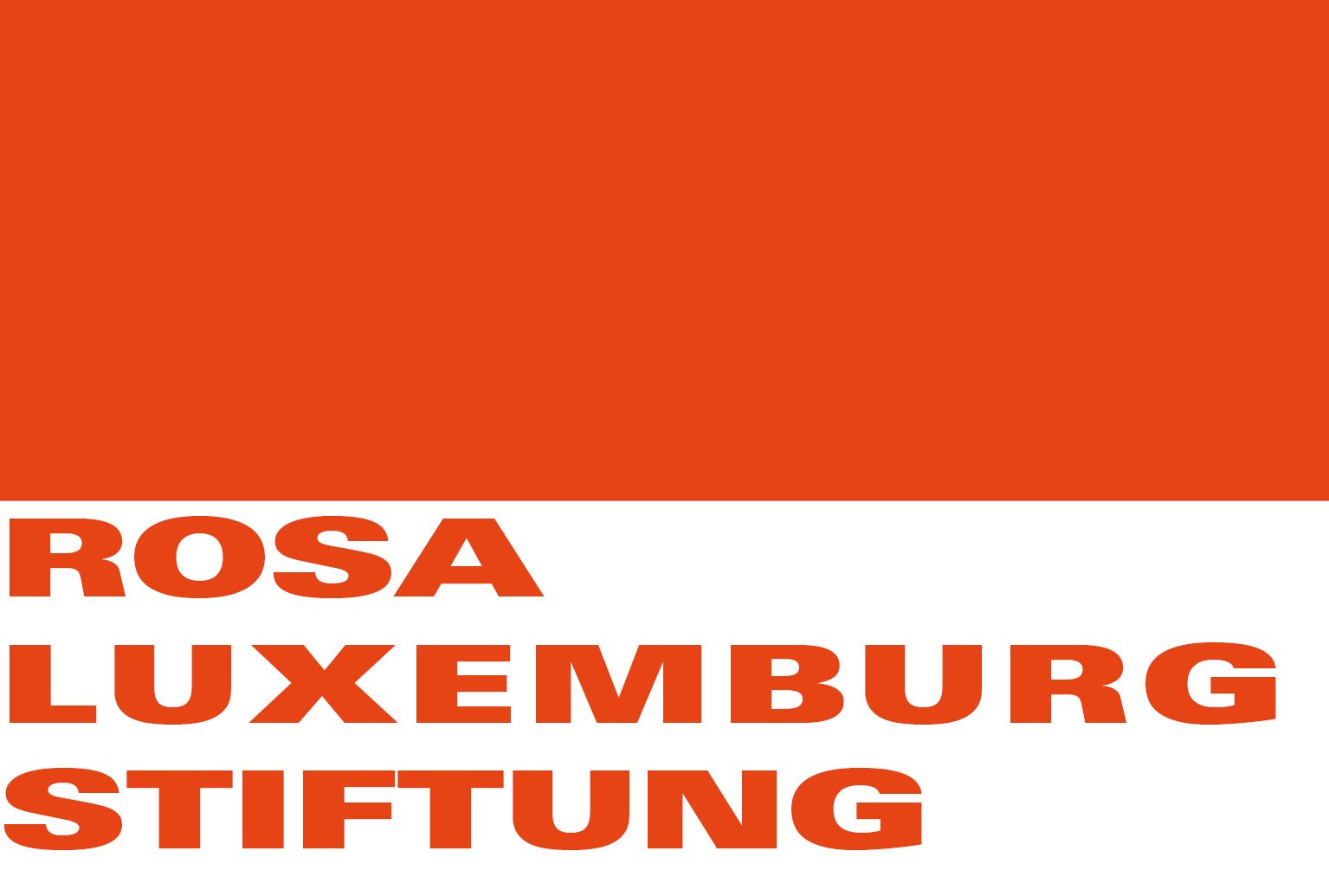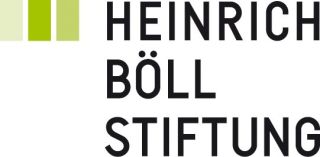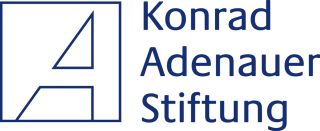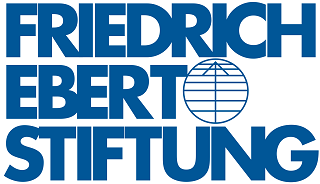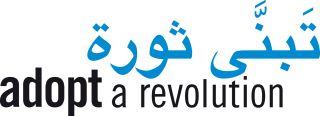Contextualized within the discussion on authoritarian persistence in the Middle East, this article depicts the UAE’s disbursement of foreign aid to partner countries in the Middle East and Central Asia. It discusses the political rationality and commercial calculations behind the donors’ motivation to deliver aid to whom and why, as well as the risks and benefits for recipient regimes of allegedly easy aid delivery. By Danae Panissié
»Peace is the basis of our foreign policy and contribution to international development efforts. Helping the poor, the needy and the weak tops the UAE’s diplomatic agenda.The UAE is a friend for all.« Sheykh Muhammad in a Cabinet meeting, March 31, 2014.[1]
Why does Arab aid matter? Aid distribution by donors outside of the Organisation for Economic Co-operation and Development (OECD), including China, Brazil, South Africa, or the Arab Gulf monarchies, reflects shifting dynamics in our world. Therefore, the UN post-2015 Agenda[2] seeks to overcome the strictly OECD-driven development approach and its dichotomous worldview of a »poor south« opposed to a »rich north«. Although the importance of non-OECD donors is acknowledged, critics stress the lack of OECD-style conditionality and how massively some aid contributors undermine political and economic liberalization processes in recipient countries, by providing aid in return for political or economic gain. OECD donors, however, are no strangers to the use of aid for strategic reasons. OECD development assistance has suffered its setbacks, when in comes to credible liberalization efforts over the last decades. By choosing stability over change and halfheartedly implementing conditionality, OECD-aid has been accused of operating along double standards.
The oil rich Gulf monarchies’ regional engagement is characterized by continuous diplomatic pressure, occasional military engagement and opulent financial transactions. The latter includes investment activities, trade agreements, the transfer of workers’ remittances, and aid delivery by the major donors, the Kingdom of Saudi Arabia, Kuwait and the United Arab Emirates (UAE).
Ever since the oil boom in the early 1970s, the provision of foreign aid has been a constant component of the Gulf’s foreign policy. The major Gulf donors have so far allocated between 0,5 to 4 percent of their national budgets to foreign aid, including the UAE with 1,25 (in 2013). Compared to an average of 0.2 percent among OECD donors, the Gulf donors proved to be more generous. Since the 1970s, the bulk of Arab aid has been spent in Arab countries, especially Egypt, Syria, Jordan and Yemen.
Who in the UAE gives what to whom? And when?
The UAE is one of the largest Arab donors. Much like other non-OECD donors, most of its aid is transferred through bilateral channels, instead of going through multilateral institutions, including UN institutions or the Islamic Development Bank, for instance. The lion’s share, officially some 45 percent of UAE bilateral aid, is granted directly via the Abu Dhabi government. Another 22 percent are allocated by the Abu Dhabi Fund for Development (ADFD), followed by far smaller shares (0,1 to 9 percent) by various foundations with board members of the royal family and influential tribesmen.
 Following the rentier logic, the volume of foreign aid allocation depends on the global oil price level. Source: own compilation based on OECD and OPEC data.
Following the rentier logic, the volume of foreign aid allocation depends on the global oil price level. Source: own compilation based on OECD and OPEC data.
Mainly two factors influence disbursement patterns:
Firstly, the UAE and the major Arab donors derive their national budgets from oil and gas revenues. As the figures show, the volume of aid largely correlates with developments on the global energy market. This applies to high oil price levels in the 1970s through the mid-1980s and low oil prices throughout the 1990s which resulted in relatively low sums of UAE aid. The energy market recovered in the 2000s and reached new levels in 2008 and again between 2011 and 2014.
But how do we explain discrepancies between the oil price level and aid delivery? Although the oil price fell, UAE aid delivery to Egypt and Yemen was augmented in the late 1990s. The same incongruity applies to Afghanistan and Pakistan in 2010. Most strikingly, given the oil price remained comparatively high in the course of the Arab Uprisings until 2014, aid was heavily cut down in Yemen for instance, while being unproportionally stepped up in Egypt and also slightly elevated for Afghanistan and Pakistan.
Secondly, by distributing aid, the UAE smoothens specific socioeconomic challenges to neighboring incumbent regimes and ultimately prevents spill over effects on the Peninsula. While Egypt’s Husni Mubarak incorporated the Muslim Brotherhood into his ruling bargain as a response to mounting pressure from the US in the 1990s, the UAE provided generous budget support and some transfers in the social sector to support the regime’s grip on the Brotherhood’s influence. The UAE support during that time came after a serious cutback of Gulf aid in 1980, punishing Egypt for Sadat’s peace accord with Israel. In the course of the 2008 general workers’ strike and bread riots, the UAE multiplied its aid delivery to Egypt in order to back food subsidies and buy social peace. The cash injections contributed to preventing further escalations.[3]
A quite similar dynamic of support and punishment can be observed in other cases. In the 1990s, Jordan was severely cut off, when King Hussein took Iraq’s side invading Kuwait. The same punishment applied to Yassir Arafat in Palestine and Ali Saleh in Yemen. Aid flows to Jordan were notably stepped up only in the early 2000s, when widespread protests of influential tribesmen, Islamists and young adults took place as a reaction to IMF enforced structural reforms, the Jordanian regime’s support of the Oslo Process, and the King’s participation in the War on Terror.
The UAE mainly boosted aid delivery to Afghanistan and Pakistan following the US credit crisis and the global financial crisis since 2010. This may have come as a result of the US shortening its budget for post-conflict reconstruction in Afghanistan from three billion USD (2010) to 1.9 billion USD (2014). Given the close US-Gulf security relations Washington may have expected the UAE to take a greater role in countering state fragility in its Muslim neighborhood. Aid transfers to Afghanistan were also directed at containing Iranian influence on the Shiite Hazara minority, although to a far lesser extent than Saudi engagement. In addition aid activities in Pakistan preceded agricultural land agreements to avert a food crisis in the UAE.
 Between 2012 and 2013 the UAE stepped up its foreign aid by 375 percent. The major recipient was the military regime in Egypt, just after ousting the Muslim Brotherhood in 2013. Source: own compilation based on OECD and OPEC data.4
Between 2012 and 2013 the UAE stepped up its foreign aid by 375 percent. The major recipient was the military regime in Egypt, just after ousting the Muslim Brotherhood in 2013. Source: own compilation based on OECD and OPEC data.4
After 2011, Abu Dhabi’s ambitions to avert unrest at home and thwart regime vulnerability in its neighborhood became even more apparent. At first, the UAE shifted most of its attention to domestic spending by elevating public sector salaries and undertaking employment and debt-relief measures.
Despite Egypt’s dire economic state, the UAE suspended a large share of its aid during Mursi’s presidency between 2012 and summer 2013, resulting from the Saudi and Emirati enmity towards the Brotherhood’s alternative Islamist ruling concept. Consequently, the ousting of Muhammad Mursi and the military establishment taking back government responsibility revived the aid flows at an exceptional pace and outstanding level. A budget support of three billion USD only two weeks into the military rule was granted. Another four billion USD, along with a range of investments followed in order to allow the regime to stabilize. These massive aid transactions from both the UAE and Saudi Arabia gave President Abd al-Fattah al-Sisi more leeway to circumvent OECD conditionality.
In the Jordanian monarchy, the UAE took the mass protests and its potential spill over effects very seriously and delivered some 200 million USD foreign aid per year, compared to 10 million in 2009. The Gulf monarchies also invited Jordan and Morocco to join the Gulf Cooperation Council (GCC), a request that had been voiced in vain by both countries for decades. However, the GCC distanced itself from its panic-fuelled initiative as soon as the protests had cooled off in 2013, following some merely cosmetic constitutional reforms. The aid delivery was considerably increased in 2014 to ease the pressure on Jordan’s fragile economy challenged by the massive influx of Syrian refugees which had brought over 622 000 refugees by the end of 2014.[4]
In the absence of a central political power, UAE aid to Yemen did not help to stabilize the country on the brink of collapse, but instead reinforced the government’s weakness by engaging in informal tribal politics. The UAE’s behavior is not new, as the bulk of UAE aid (mainly in food aid, infrastructure programs and health care) has been transferred to tribal confederations for decades. Neither the UAE nor Saudi Arabia, Yemen’s biggest provider of foreign aid, have any interest in strengthening the chronically weak state institutions in Yemen but rather intensify their ties to allied tribes.[5] This did not change dramatically following the protests in January 2011. In order to anticipate further tensions after key elite segments had joined the protests, the Gulf states arranged a power transition deal to a new government, as a mere continuation of the ancient régime. Meanwhile, the looming challenges of the fragile ruling bargain were reinforced and hence led - once again - to a civil war in 2015 which is ongoing to this day. The UAE militarily backed the Saudi-led intervention Decisive Storm in 2015 to contain Iranian influence through the Houthi rebels while preserving a GCC-friendly ruling bargain between Sanaa and the tribes.
Giving to be good or learning to be bad? Thoughts on motivations to distribute Arab aid
Regime stability in authoritarian regimes does not only rely on averting physical threats but also on legitimacy. When framed as »solidarity with the Arab World«[6] or according to Sheykh Zayed, founder of the UAE, as »religious responsibility to share the God given wealth of the Gulf states«,[7] foreign aid is considered an instrument – among others – to boost legitimacy, both at home and in recipient countries. However, the recipient is not necessarily the incumbent regime, as seen in Yemen or Egypt under Mursi. Aid can be bypassed around the regime and handed over to allied elites who seem to serve UAE interests more than incumbents.
In addition, the disbursement of aid has been accompanied by increasing economic trade and investment activities. For instance, Egypts military regime agreed to import 65 percent of oil products from the UAE in 2015 after the three billion USD cash injection following the toppling of Mursi. UAE contractors were also involved in large housing projects on land provided by the military and the largest Emirati gas company started a range of exploration projects in Egypt in 2013. Thus, foreign aid also seems to contribute to the UAE’s economic diversifying measures by »smoothing the way for future investments«[8] and fits right into the Gulf’s and the UAE’s »checkbook diplomacy«.[9]
It certainly cannot be ruled out that individuals within aid giving institutions have a genuine altruistic, philanthropic or religious motivation to provide recipients with foreign aid. But from the regime’s perspective, aid is one instrument, among others, used strategically to support both regional authoritarian stability and domestic regime survival. As shown above, disbursement patterns indicate that aid was and is boosted at specific points in time when neighboring regimes are in distress which bears risk of spilling over to the Peninsula. In many cases since the 1970s, Arab aid and UAE aid in particular, reinforced the incumbents’ grip on power or actively supported a favorable transition. By reinforcing distributive practices, the pressure on the recipient regimes’ social accountability was reduced, thus to some extent, its legitimacy was strengthened. Therefore, taking into account the growing literature on authoritarian learning and cooperation practices among dictatorships,[10] the recipient countries do not exactly »learn to be bad« they are, however, encouraged »to stay bad«.
Whipped recipients?
If one wonders how the Gulf monarchies’ need for a stable neighborhood is consistent with the alleged support for Jihadi actors[11] – it barely is. When Saudi Arabia and the UAE provide massive humanitarian aid for Syrian refugees in Jordan, Lebanon and Turkey but also militarily support Jihadi insurgents in Syria who – among others – made these people refugees in the first place, this indeed appears contradictory. It becomes even more absurd, when terrorist attacks take place on the Peninsula[12] or in recipient countries, like Afghanistan and Turkey. But one may keep in mind that these transactions do not necessarily come from the same sources. As state behavior is shaped by domestic arrangements consisting of complex interactions between political elites that pursue both overlapping and competing political, ideological and economic interests, regional politics can be contradictory and anything but sustainable. This applies to any political system but in authoritarian regimes the behavior of PRE (politically relevant elites) takes place outside the formal political sphere which can lead to money being channeled to actors not because of strategic interests, but ideological sympathy (as in the case of the Wahhabiyya and al-Qaida or ISIS).
As shown in this article, Arab aid is highly volatile, unreliable, destructive and may also contradict other policy priorities. The absence of bureaucratic paperwork, however, allows for a fast delivery of cash, food, and fuel which is indeed beneficial to the population in need. The perils of Gulf aid - for both the rulers and their populations - lie in its volatility and the donors’ long-term incitements. The primary addressees are allies among the recipients’ political elites, not necessarily the incumbent regimes, as seen in Egypt under Mursi or in Yemen. As of 2016, the situation for both countries is even worse. In Yemen, the Gulf involvement has facilitated the erosion of state structures over decades and the outbreak of the war. Facing deteriorating economic developments in Egypt, Saudi Arabia and the UAE realized their billions of aid were sunk into short-term measures and are now distancing themselves from the military regime.[13] This again seems hypocritical, since the volatility of Gulf aid does not render sustainable planning possible, neither are dictators given incentives to plan ahead.
Geopolitical considerations play a decisive role, as well. With growing Saudi-Iranian tensions over the last couple of years, the necessity to keep spheres of influence intact has gained priority. Hence, the Shiite Houthis taking over Sanaa in 2015 and Sisi claiming sympathy for Iran’s post-conflict strategies in Syria was critically observed by the Gulf. Although the UAE has less enmity towards Iran than Saudi Arabia, Abu Dhabi largely supported Riyadh’s containing measures in Syria, Egypt and Yemen. Meanwhile, the people’s aspirations voiced in the 2011 Uprisings for fair development, political participation and stable employment are left untackled.
Danae Panissié works on a larger research project on Arab aid activities to the Middle East and in how far European and German development cooperation efforts may be challenged by the Gulf’s contributions to authoritarian resilience.
[1] www.thenational.ae/uae/government/uae-is-a-friend-for-all-says-sheikh-mohammed
[2] www.bmz.de/de/ministerium/ziele/ziele/2030_agenda/index.html
[3] http://grc.net/data/contents/uploads/Egypt_Money_new_12-05-14_4667.pdf
[4] http://data.unhcr.org/syrianrefugees/documents.php?page=1&view=grid&Country%5B%5D=107&Search=%23External+Statistical+Report+on+Registered+Syrians+in+Jordan%23
[5] http://eprints.lse.ac.uk/55241/1/Burke_2012.pdf
[6] Ibrahim Shihata: The other Face of OPEC. Financial Assistance to the Third World. Longman, London/New York 1982. [price not available]
[7] https://www.uaeinteract.com/uaeint_misc/pdf_2008/zayed_tribute/zayed.pdf
[8] https://www.swp-berlin.org/fileadmin/contents/products/comments/2014C26_rll.pdf
[9] http://www.arabamericannews.com/news/news/id_10678/Saudi-cables-highlight-%22checkbook-diplomacy%22.html
[10] https://www.giga-hamburg.de/de/system/files/publications/wp274_bank-edel.pdf
[11] http://www.nytimes.com/2016/07/16/us/28-pages-saudi-arabia-september-11.html?_r=0
[12] http://www.aljazeera.com/news/2016/07/saudi-arabia-qatif-explosion-160704165007140.html
[13] http://www.swp-berlin.org/fileadmin/contents/products/aktuell/2016A01_sil.pdf


